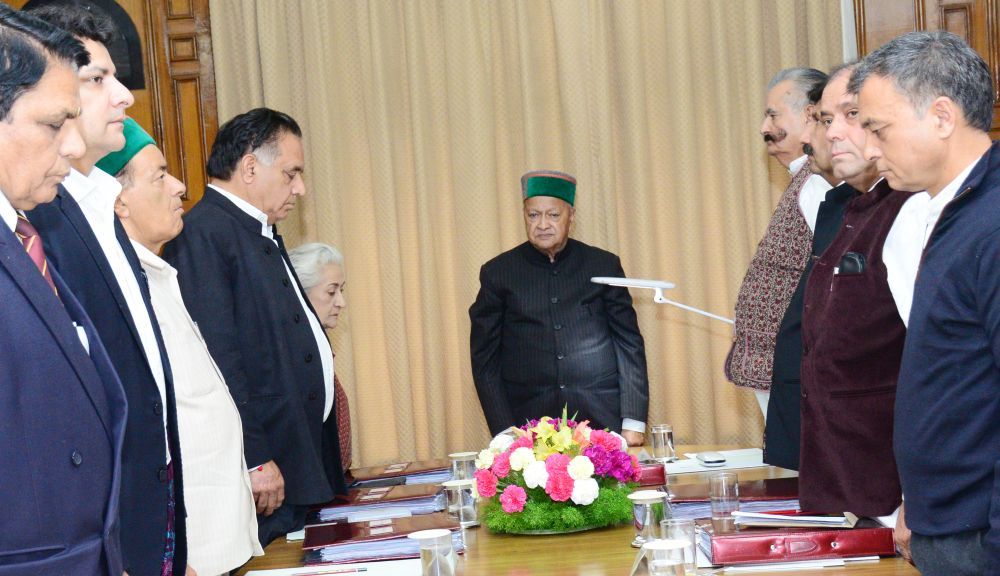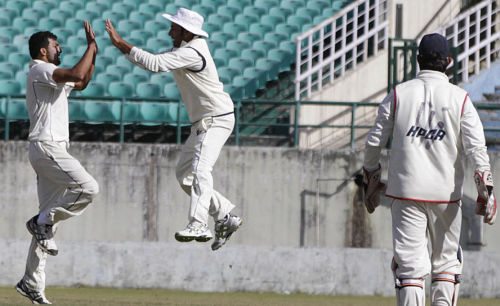A disease not only represents a permanent threat to the income earning capacity of people, but it could also in many cases lead to the family falling into a debt trap. The situation gets worse when the need arises for low-income families to receive treatment, they often ignore it due to lack of resources, fear of loss of wages, or wait until the last moment when it is too late. Even if they decide to get the desired healthcare they consume their savings, they are forced to sell their assets and property or cut other significant expenditures such as education for children. Alternatively, huge debts must be borne by them. Ignoring treatment can lead to unnecessary suffering and death while selling property or liability can put an end to the hope that a family will always escape poverty.
Health Infrastructure and Health policy of Himachal Pradesh
Himachal Pradesh is a hilly state in the country’s north-west. The land with wide altitude variations ranging from low slopes to high mountains with lakes and flowing waterways. Himachal Pradesh has been India’s classic success story of rural health. At 90 %, it has the highest proportion of Indian rural population. At the same time, Himachal has better indicators of human development on average compared to other states with similar rural communities. Instead of better figures, Himachal Pradesh is still exposed to some of the life-threatening diseases.
Among other things, the State Health Commission, which was formed in 2014 with prominent experts as members, focused on developing inter-sectoral strategies needed to address environmental, nutritional and social health determinants as part of the overall state development.
Health Service Profile
It is observed that contagious diseases are still vicariously liable for the state’s common illness and death.
Communicable diseases
Himachal Pradesh has three significant chronic disease groups
1) Respiratory bronchitis, Tuberculosis, ARI.
2) Water and Foodborne diseases. Diarrhoea, dysentery, amoebiasis, worm infestation, hepatitis.
3) Contact with illnesses like skin diseases, RTI, STD, HIV / AIDS included.
1. Tuberculosis
Tuberculosis remains the state’s biggest killer. Existing data reveals that the disease is likely to develop around 2000 patients every year. To cope with the situation, in 1998, the state launched the revised tuberculosis control program in three districts (Kangra, Mandi, and Hamirpur), followed in 1999 by three more areas. In 2000, the remaining six regions would have been covered. The program helped in detecting the most cases of tuberculosis as soon as possible and also provided very effective short-term supervised treatment.
2. Leprosy
Leprosy’s problem in the state was quite severe. According to the 1971 data, the prevalence rate was 26 per 1000 population. However, as a result of the successful implementation of the program; the prevalence rate was reduced to less than 1 per 10000 (0.47/10000 as in March 2000) with M-LEC’s successful conduct in the state, the disease is likely to be eliminated soon.
3. Malaria
In recent years, the number of cases of the disease has declined in the state as compared with the data of the last twenty years. The reason behind is successful implementation of the various policy by the state government. Though, Malaria has not been wholly thrown out from the state. The disease is still overpowering the rural area of Himachal Pradesh. Malignant malaria problem is though negligible.
4. Diarrhoea
Diarrhoea is responsible for numerous deaths of infants. NFHS-2 among children under the age of 3 years is estimated at 31 percent. The prevalence of infection with parasites in children under the age of 14 was 13.8 %.
5. RTI / STDs
The RTI / STD problem is severe in the state as well. The study conducted in the district of Hamirpur back in time revealed the prevalence of STDs as 23.9% through syndromic diagnosis and as 3% through etiological diagnosis. The incidence in women is higher of RTI, STD is quite high, requiring intensive efforts at all levels to manage the diseases. F. HIV-AIDS: Himachal Pradesh’s HIV-AIDS epidemic is also negatively impacted. Of the 25395 individuals screened, 254 were found to be HIV-positive, including 82 cases of AIDS. More than 82% of these cases come from the districts of Hamirpur, Kangra, Shimla, Bilaspur, and Mandi. Based on the data collected on HIV sentinel surveillance, it is estimated that there could be around 3000 positive cases of HIV in the state.
6. NUTRITIONAL PROBLEMS
According to the dietary survey carried out by the Department of Women and Social Welfare, the Government of India covered ten districts. It was found that 0.5 percent of infants suffered from Marasmus. 81% of children were affected by mild to moderate malnutrition and 4% by severe hunger. Eight percent of adults had deficiencies in chronic energy. Goiter was a significant disease of nutrient deficiency in various groups of 2-13 percent. According to NFHS-2, 40% of women and 67% of children suffer from high anaemia and warrants focused attention.
7. IODINE DEFICIENCY
Goiter is still a dietary deficiency disorder to be present in the sub-Himalayan belt. Goitre’s prevalence was high until 1974. Even after preventive measures taken to cope with the deficiency, Goitre still prevails in the area of Himachal Pradesh.
Health Policy Of Himachal Pradesh
To deal with numerous health diseases, the state government of Himachal Pradesh has introduced various health care schemes. They are:
Rashtriya Swastya Bima Yojana
RSBY’s goal is to protect BPL households from financial liabilities resulting from health shocks involving hospitalization. Beneficiaries under RSBY are entitled to coverage for admission up to Rs. 30,000/-for most hospitalization-related diseases. For a large number of interventions, the government has even set the hospital package rates. From day one pre-existing condition will be covered, and there will be no age limit. Coverage extends to five family members, including household head, spouse, and up to three dependents. Beneficiaries only have to pay rupees thirty as registration fee while the central and state government pays the premium to the insurer selected by the government of the state based on a competitive bid.
Mukhya Mantri State Health Care Scheme
The government of Himachal Pradesh launched the Mukhya Mantri State Health Care Scheme (MMSHCS) in 2016. The MMSHCS is intended for those not enrolled under Rashtriya Swasthya Bima Yojna(RSBY) or other schemes of medical reimbursement. The State had focused on providing health coverage under MMSHCS to the most vulnerable population. The beneficiaries of the programme will be more than 2, 00, 000 families. The Scheme primarily covers the following 9 categories:
1. Senior citizens (80 years or older)
2. Ekal Naris
3. People more than 70% of disabilities.
4. Contract staff (government, autonomous bodies, corporations, boards)
5. Part-time employees (government, independent organizations, corporations, and committees)
6. Daily wage workers (government, independent bodies, corporations, and committees)
7. Workers of Anganwadi
8. Helpers of Anganwadi
9. Workers at midday meals
Mukhya Mantri State Health Care Scheme Benefits
• The beneficiary will be benefited with 30,000 rupees per year under “Basic Package” on family floater bases only for hospitalization (indoor treatment & daycare) in all of the 173 hospitals under RSBY. In the case of critical disease, under “Critical Care Package” (only in Three Hospitals viz. PGI Chandigarh, IGMC, and RPGMC Tanda) the beneficiary will be benefited with Rs. 1, 75,000/-per year on a family floater basis.
• The MMSHCS is entirely cashless, and at the time of registration, you need only to pay Rs. 30/-. The recipient will be allocated a smart card after paying the registration fees. However, the smart card’s validity will be five years; the card should be renewed after three years since the software used has its limitations.
Senior Citizen Health Insurance Scheme
Himachal Pradesh’s government has launched the State Senior Citizen Health Insurance Scheme (SCHIS) to provide access to therapeutic geriatric health services through additional insurance cover. The scheme will provide all existing Rashtriya Swasthya Bima Yojna smart card holders with top-up coverage of Rs. 30,000 per senior citizen in addition to the basic coverage of Rs.30,000 in Trust / Society mode. Any recipient who is 60 or older and is currently enrolled in RSBY or will be enrolled in RSBY is qualified for such added benefits. If there is more than one senior citizen in any RSBY rolled family, then the additional cover will be multiples of Rs.30,000 per senior citizen to be provided on a floating basis among the senior citizens of the RSBY enrolled family. Thus, if there are two senior citizens in a family, then both senior citizens would have a cover of Rs.60,000 available on a floater basis. Exclusively senior family citizen enrolled in RSBY can take additional benefit. The coverage will be provided by the State Nodal Agency HP Swasthya Bima Yojna Society until the beginning of the National Health Protection Scheme and after the start of the National Health Protection Scheme through Insurance Company. Family senior citizens eligible for RSBY but not rolled in this scheme will not receive SCHIS benefit. This package will go beyond the annual box of Rs.30, 000 per RSBY family. It was carried out by a technical committee comprising representatives of the Ministry, governments of the State and technical experts covering cardiology, cardiothoracic surgery, cardiovascular surgery, neurosurgery, polytrauma and repair, burns, surgical oncology, and medical oncology. These two additional covers will be compensated up to Rs.1.75 lakh (up to Rs. 2.25 lakh for cancer) from the existing RSBY critical care supplement. The scheme will be financed under the Insurance Model through insurance and trust models. The estimated annual add-on premium is up to Rs.500 per family to implement SCHIS.
Matri Seva Yojana
Himachal Pradesh’s government launched Matri Seva Yojna providing the state’s women who are pregnant, a facility for free organizational delivery in all public health institutions. The scheme was designed to ensure the mother and child’s health. Life-saving drugs are also made available to patients free of charge in addition to free institutional delivery.
Mukhyamantri Vidyarthi Swasthy Karyakaram
H.P’s school health program will address school children’s health needs in the form of health education, environmental healthcare, nutrition, safe drinking water, gender, and social concerns. H.P’s state will use disease prevention strategies, health promotion strategies as well as underlying disease detection and medical advice on health issues.







